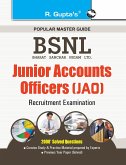The adequacy and timeliness of the dissemination of army pay and fringe benefits information to ROTC cadets and to junior ROTC officers is examined. To obtain data for this study, questionnaires were sent to college ROTC units, to army schools conducting branch basic courses, and to ROTC officers attending selected basic courses. The responses to these questionnaires provided the information necessary to determine the amount of formal instruction presented. Lesson plans were requested, and the adequacy of the instruction was determined by reviewing the lesson plans submitted. The amount of literature issued on pay and fringe benefits was also ascertained from the questionnaire. In addition to the original data obtained utilizing questionnaires, a review of the literature showed that pay and fringe benefits is an important factor in career decisions, but is not the most important factor. This review also established the importance of providing the junior officer with information that may affect his career decision very early in his military career. Existing guidance and requirements for the dissemination of pay and fringe benefits information are presented. This includes background information on the Army Information Program, the college ROTC program, and the army school system, career counseling and recruiting for ROTC are also addressed. Each individual's knowledge of pay and fringe benefits, his opinion of the relative merits of army and civilian compensation, his primary source of information on this subject, and the manner in which he would prefer to receive new information were all explored. Several conclusions were reached which relate to improvements in the existing programs for the dissemination of pay and fringe benefits information. This work has been selected by scholars as being culturally important, and is part of the knowledge base of civilization as we know it. This work was reproduced from the original artifact, and remains as true to the original work as possible. Therefore, you will see the original copyright references, library stamps (as most of these works have been housed in our most important libraries around the world), and other notations in the work. This work is in the public domain in the United States of America, and possibly other nations. Within the United States, you may freely copy and distribute this work, as no entity (individual or corporate) has a copyright on the body of the work. As a reproduction of a historical artifact, this work may contain missing or blurred pages, poor pictures, errant marks, etc. Scholars believe, and we concur, that this work is important enough to be preserved, reproduced, and made generally available to the public. We appreciate your support of the preservation process, and thank you for being an important part of keeping this knowledge alive and relevant.
Bitte wählen Sie Ihr Anliegen aus.
Rechnungen
Retourenschein anfordern
Bestellstatus
Storno





